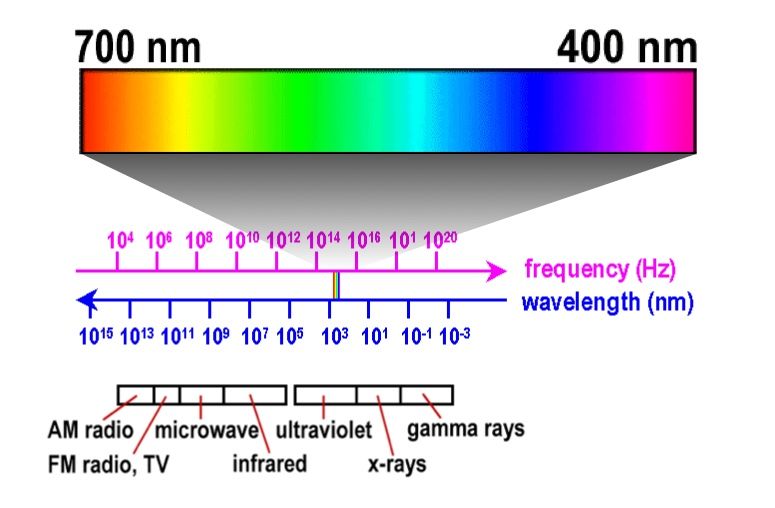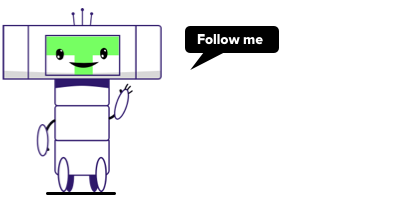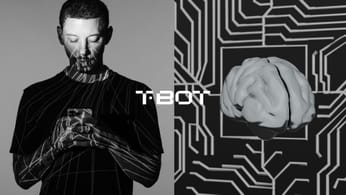
Living Healthfully & Harmoniously With Tech
Don't let your health suffer from over exposure to electronics. Ramiro goes over the major health risks when using electronics and shares some simple but powerful solutions.
DISCLAIMER: I am not a doctor. This website (takebackourtech.org) does not provide medical advice/ This article and all its embedded content is for educational & informational purposes only. This is not a replacement for professional advice. We are not liable for any risks or issues associated with your use of the information on this site - always practice with care and do your own research.
Today we're sharing a special article with you! I started using the computer from a very young age but only learned about the health hazards of long term computer use as an adult.
Now with kids using tech at younger ages then ever and with many people shifted to working remotely in front of the computer - I want to present solutions to maintain and protect our health with tech. Thankfully, I had the opportunity to do this with the wonderful World Council For Health, at their General Assembly Meeting #68.
Please find the slides from my talk and the talk embedded below, as well as a short form article with my research.
The Problem
Our lifestyle has continued to transform digitally over the past 5 years, accelerated by the COVID lockdowns. There is a beneficial side to this as many jobs became fully remote and individuals were able to create their own schedules, travel, and become digital nomads.
On the other hand, with remote workers spending on average of 10 hours and 42 minutes a day in front of their computers, we need to take into account the potential health hazards of this extended screen time, sitting, and exposure to electronics.
Feeling Blue
Have you ever wondered why you can't go to sleep as quickly after watching TV or browsing on your phone? It has to do with with the light coming out of our screens, let's take a deeper look at that.
Light is electromagnetic energy and takes the form of a wave. All visible light can be distinguished from other electromagnetic energy by its wavelength (among other properties). The wavelength of visible light takes up only a small range from 400-700 (nm), or billionth of a meter.

In the image below, the visible light spectrum is expanded so you can see the detail. Notice that wavelength increases from right to left, and frequency increases from left to right. When the wavelength is smaller, the frequency is higher, and the energy of each photon in the wave is higher - calculated by the Planck-Einstein relation.
Within our visible light spectrum, we see that blue light has a shorter relative wavelength and a higher frequency, meaning that it carries more energy.
Modern Blue Light Exposure
The most prevalent source of blue light is sunlight! However, there is now plenty of artificial blue light. These come from interior lighting, LED screen displays, and our phone screens. For hours at a time we're in front of these screens, only inches away from our eyes.
LED lighting has been heavily promoted by industry & government for its 'energy saving capabilities'. The US Department of Energy predicts that "by 2035 lamps and luminaires are anticipated to hold the majority of lighting installations, comprising 84% of all applications". Europe went so far as to ban halogen lighting in 2018, as part of a continuation of directives that phase out 'less efficient light sources'.

Even more powerful are the OLED and AMOLED displays found in mobile phones, which radiate light directly from the screen instead of a backlight as typical LED screens use.
The Effects Of Blue Light
Blue light has an important role to play in our biorhythms. Our retinas have important photosensitive cells which receive blue light and are responsible for passing it on to the systems that regulate our circadian rhythm.
Phototoxicity
Because blue light still carries the most energy out of visible light, there were studies carried out on its phototoxicity. The first study of phototoxcitity was carried out by Noell in 1966 on rats where they anesethezied the rats, taped one their eyes open and exposed them to white light for 24 hours in different settings with the light being a few centimeters from their eye. The study found significant irreversible ERG loss and damage to retinal cells, ERG being (Electroretinogram), a test that measures electrical activity of the retina in response to light and is related to many retinal disorders.
A modern study took retinal cell cultures and irradiated them with 405nm blue light and studied the effects after long term exposure (3 hours).

The most common type of damage that can occur to retinal cells is photo-chemical damage which can happen under high intensities of light, or even lower intensity lights over a longer period of time.
Related to and in addition to this, blue light aggravates macular degeneration, and can also cause delayed sleep onset.
Solutions
Take frequent breaks from your computer to avoid long-term continued exposure.
You can use different programs to accomplish these forced breaks, my favorite is SafeEyes on Linux. Take a break every 15-20 minutes, and a longer break every hour.
Avoid computer use in the evening time or night to prepare your body's circadian rhythm for bed. If you can't consider blue light blocking glasses.
Get permanent eye protection against the sun and your screens. Blue light blocking glasses can be effective if you know their how much light they block at what wavelength. There are day and night blue light blocking glasses which block different amounts of blue light. A pair for nighttime should block at least 98% of blue light at least up to 455nm to get protection from retinal degeneration,
If you're concerned with blue lights effect on sleep, you can put on a nighttime pair 2 hours before bed to have an easier time going to sleep. If you're concerned with potential damage to your retinas, you can make sure to turn the brightness on your monitors all the way down, some monitors have ‘eye’ saver mode.
Many phones also have a night light feature that should be used.
There are also programs you can use to change the color temperature, however note that this is only a minor improvement because the backlight screens from your LED is still white light.
Windows/macOS: flux
Linux: redshift
You can also opt for darkmode in software that you use to avoid looking at a bright white screen. The Dark Reader browser addon is excellent for transforming webpages into a darker theme.
The most effective thing you can do is to get blue light blocking glasses for daytime, which can block 30 - 40% of the blue light, take frequent breaks, and use the computer less.
But before you go out and buy a pair of Blue Light blocking glasses, consider this study that doesn't find high quality evidence for the benefits of blue light blocking glasses. (although on a good note, they did find improvements of sleep into those who already had sleep problems, and small improvements in eye fatigue when comparing low blocking glasses vs high blocking glasses).
My personal opinion is to try them and see how you feel - especially if you use the computer a lot or have sleep problems.
Ergonomics
Let's take a second to ask ourselves how many of our hours are spent doing sitting activities like on the computer, driving, reading, or relaxing. As someone who works with computers, I've spent most of my life sitting, so this issue and its consequences are really important to me. Higher sitting times have been associated with to all-cause, cardiovascular and cancer mortality, type 2 diabetes, and depression.
toSince the associated effects of sitting and sedentary lifestyle are so pervasive, it may be more beneficial to look at programs that reduced sedentary activity.
The JustStand website is a great resource, and from it I looked at 2 studies that showed metabolic activity when breaking up sedentary activities with walking. This was both seen in kids and older adults.
Movement is medicine.
In both these studies (and more) the biggest metabolic benefits were seen when movement was involved, like walking or stepping in place. There was also self-reported improvements in mood, fatigue, and food cravings.
Computer Posture
I've heard many different opinions on computer sitting posture, like having your hands at a 90 degree angle, or eyes top of the screen. I struggled to find any solid reasoning until I found this study of 632 computer users who started computer work together. Observations were made about the user's postures at the beginning of the study and a regular dairy was maintained by each participant of the study, who's purpose was to record any neck or shoulder pain.
The lowest risk of Neck/Shoulder symptoms were indicated by the following posture traits, keep in mind that they chose binary cutoffs for these studies, more research is needed to find the optimal points:
- inner elbow angle > 121 degrees
- greater downward head tilt (< 3 degrees, you should be looking down at your screen slightly - 10 degrees would be looking straight forward)
- keyboard > 12 cm away from the table's edge
- neutral wrist posture (-5 to 5 degrees ulnar deviation, this means your wrists are pointing almost straight forward, not twisting to the left or right)
Ergonomics Solutions
Here are some additional solutions we can infer:
- take a break from sitting every hour (maybe use the SafeEyes program to guide you)
- incorporate standing and stepping (a standing mat really helps with this)
- use a standing desk
- use an external keyboard and display so that you can stand with a laptop
- if you feel inclined you can use a split ergonomic keyboard to keep a neutral wrist posture
Electromagnetic Frequencies
There's no doubt that electromagnetic frequencies can be harmful for the living things and the human body. Its a vast subject with many studies and reported effects on living things, including plants, animals and humans. All living things hold their own electromagnetic field, and these fields are important for intercellular communication and processes. I will refer readers to other resources on EMF, and instead focus on solutions that minimize EMF when in the presence of electronics.
Cell Phone Task Force's Radio Wave Packet

Teebot wants you to follow us on these alternative social platforms:
Telegram Channel
Telegram Discussion
XMPP Group
Odysee
Hive
Minds
EMF Solutions
Preventative Measures
The following solutions might seem obvious but require consistency when trying to keep your environment clean of EMF.
- Use an ethernet cord for all of your internet connected devices, run a wire directly from your router to your computer. Then turn your computer's WiFi off.
- Avoid using bluetooth mice, earbuds, and devices - opt for wired. Make sure to turn your computer or phone's bluetooth off.
- You can purchase ethernet adapters that work with mobile phones as well, we sell ethernet adapters alongside the Above Phone. Put your phone on Airplane mode and then connect an ethernet adapter for neglible EMF emissions. (make sure to test your phone)
- Keep electronics out of the bedroom, turn wireless routers, phones, and laptops off before going to bed.
Grounding / Earthing
When's the last time you were connected to the Earth? Although its easy to overlook, modern life has disconnected us from the Earth - we use non-conductive materials in our shoes (rubber) and our houses and buildings are built up off the ground.
Healthful practices like Yoga and Qi Gong are prescribed without shoes, so that we are in direct contact with the Earth's energy. In Qi Gong, energy is absorbed from the feet as Chi, or life force energy. What did these ancient practices know about our connection with the Earth?
Clint Ober, a retired cable TV pioneer, 're-discovered' being in touch with the ground - or what he coined 'Earthing'. After experimenting on himself and his friends, he found that there were many health benefits to be had by creating a circuit between your body and the ground. He used a conductive bed pad connected to the earth through a wire and ground rod to 'ground' while he slept and saw many health benefits. At first, no doctor or scientist would give him the support to conduct a large study, and so ge created his own study with 60 people and saw massive improvements in time to fall asleep, quality of sleep, and even pain.
Since then there have been over 2 dozen published studies on Grounding and its effects, and we've seen that it helps with stress, anxiety / depression, inflammation, sleep, and healing.
More importantly when it comes to EMF, we've seen that when people are in contact with the ground, it reduces the harmful currents in their body. A study on pre-mature babies at the Pennsylvania State University's Children's Hospital found that grounding immediately and significantly reduced skin voltage, even in the presence of medical equipment, as well as improved health markers like Heart Rate Variability (HRV).
This reduction in skin voltage was also seen in adults when in the presence of EMFs and on a grounding pad.
The study confirms the “umbrella” effect of earthing the body explained by Nobel Prize winner Richard Feynman in his lectures on electromagnetism [16]. Feynman said that when the body potential is the same as the Earth's electric potential (and thus grounded), it becomes an extension of the Earth's gigantic electric system. The Earth's potential thus becomes the “working agent that cancels, reduces, or pushes away electric fields from the body.”
Applewhite was able to document changes in the ambient voltage induced on the body by monitoring the voltage drop across a resistor. This effect clearly showed the “umbrella effect” described above. The body of the grounded person is not subject to the perturbation of electrons and electrical systems.
How To Use Grounding or Earthing
It really couldn't be easier:
- Make sure you get time outside with your bare feet. The best time is in the mornings when the grass is wet with due for more conductivity. Natural bodies of water like the beach or lakes are also excellent. I try to ground every morning and practice Yoga or Qi Gong.
- You can purchase a grounding sheet from Earthing.com. They offer grounding bed sheets so you can remain grounded in bed. You simply would place the sheet, and connect a wire to the ground port (the third port of an outlet) of a properly grounded outlet (they provide a testing kit to test your outlets) Its incredibly easy.
- Use a grounding mat under your desk so you can remain grounded in the presence of EMFs in your work environment. It works the same way, plug into to a properly grounded outlet.
EMF Protective Clothing
EMF protective clothing uses conductive fibers to form a solid conductive layer which can attenuate incoming electrical fields and directs them to pass through the the clothing rather than through the body, shielding you from the radiation.
There are two things you should look for when purchasing EMF protection:
- % of conductive material in the fabric (I prefer silver) (higher the better - 40% is great)
- Attenuation of EMF dB, this is a logarithmic unit that corresponds to the percent reduction of measured field, a dB measure of 25 would reduce the measure by 99.7% - the higher the better
You can take a real world measure by measuring the level of EMFs outside and within the confines of the cloth around EMF sources such as WiFi routers, phones, and even microwaves.
Conclusion
Nothing is more important than our health. Although our lifestyles now feature electronics heavily, we can still protect ourselves and our loved ones. I hope this article gave you awareness of some new issues, the resources to research further, and the inspiration to take healthful action.
Take Back Our Tech Newsletter
Join the newsletter to receive the latest updates in your inbox.



